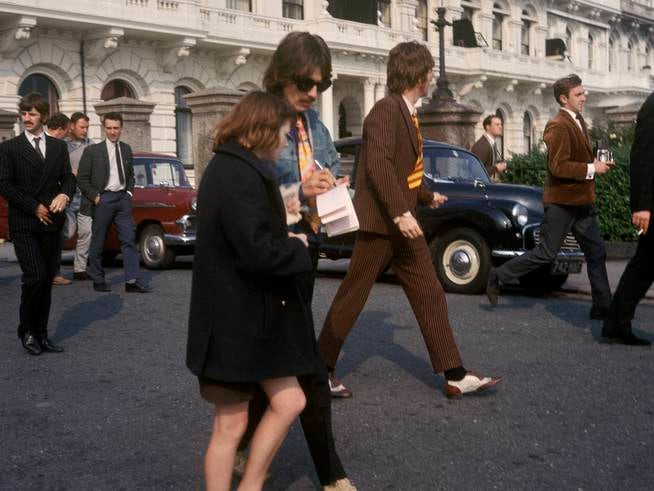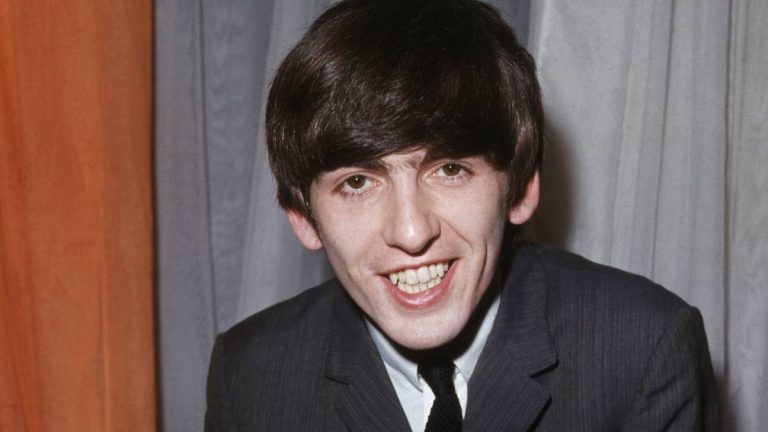In his last days of life, plagued by severe pain and extremely weakthe call ‘quiet man’ or ‘Silent Beatles’ had a very close heartless man. Coincidentally, that ruthless man He was the doctor who treated him for his illness, a metastatic cancer whose prognosis was devastating.
George Harrison He began fighting cancer in 1997 when a malignant tumor was detected in his throat. From then on, she undertook a desperate journey through hospitals around the world to eradicate the disease that first attacked his throat, then his lungs and, finally, his brain. Seeking the best specialists, and as her health continued to deteriorate, It was placed in the hands of the prestigious doctor Gil Lederman.
At the end of October 2001, Harrison entered the Staten Island University Hospital, In New York. I suffered terrible pain and was extremely thin and weak when he entered the clinic using the name George Arias (the maiden name of his wife, Olivia Arias). During his hospitalization, at least two bodyguards guarded the entrance to his room. Among the few he was allowed to pass were Paul McCartney and Ringo Starr.
Ringo Starr and Sir Paul McCartney at the world premiere of “The Beatles: Eight Days A Week – The Touring Years.” / Fred Duval
Dr. Gil Lederman subjected Harrison to a controversial and revolutionary stereotactic radiosurgery, a non-invasive procedure that attacked tumors with millimeter precision using high doses of radiation. AND In addition to caring for George, she also attended to the press. For example, he stated in The New York Post that some patients turned to him because his treatment offered them a good chance of being cured “and others, whose cancer has spread and they have no cure options, They come because they want me to take away their pain and suffering. This way they have a few more months of comfort and can share time with their family and friends.” Harrison was in this second category, in that of being able to enjoy the time he had left with Olivia, his wife, and his son Dhani..

George Harrison’s wife Olivia and son Dhani, arriving at the “Concert for George” tribute in 2003. / Dave Bennett
And he also revealed that his patient He was a “very loving and generous” man. and that he himself had experienced it firsthand when, overcoming the pain, he gave his 13-year-old Ariel a guitar lesson. “My son played for George and George played for him, and then he took a pen and signed the guitar, ‘for George Harrison’s Ariel'”. This is what Lederman declared in the Post. He added that on November 7 he had left the hospital, still seriously ill, and had taken up residence in a home for two weeks while undergoing outpatient treatment.
Harrison continued fighting for his life and flew to Los Angeles on a private flight, where he was admitted to the UCLA Medical Center, this time to try chemotherapy. But it was a matter of days. Finally, Harrison died on November 29, 2001. He was 59 years old..

A citizen of Liverpool reads in the newspaper about the death of Beatle George Harrison outside the famous venue The Cavern Club. / Phil Noble – PA Images
Three years later, on January 8, 2004it was discovered that Dr. Gilbert Lederman had been a heartless man. That day, Harrison’s family filed a $10 million lawsuit against him. They alleged that the doctor had coerced a dying Harrison to sign an autograph on his son’s guitar and to sign autographs for his two daughters. According to the lawsuit, the doctor had Harrison listen to Ariel playing the guitar and then placed the instrument on her lap and asked her to sign it.
When Harrison resisted, the writing continues, Lederman approached him, He grabbed his hand and forced him to scribble his autograph. Meanwhile, a Weak and exhausted, George insisted that he could barely write his name. “Come on, you can do it,” the doctor urged him. The photo of the son and the guitar appeared two weeks later in the National Enquirer. But, according to the lawsuit, Lederman’s “most offensive, insensitive and inappropriate behavior” was taking his three children to a dying George and having one of them play guitar for him. The musician had always fiercely protected his privacy.

George Harrison signing an autograph while he and his band were filming ‘Magical Mystery Tour’, in September 1967 / David Redfern
The family requested the guitar and autographs and rejected the doctor’s offer to donate the instrument to charitable organizations. They also accused him of creating “a circus atmosphere” talking to the press and using the musician’s illness to promote on television. Lederman had already been sanctioned in 2003 by the Department of Health with a fine of $5,000 for his public gossip about the condition of the Liverpool guitarist.
After two days of conversations between the Harrison family’s lawyers and those of the doctor, an out-of-court settlement was reached. The signed guitar and autographs became part of the musician’s inheritance, while the heirs gave a new guitar to the doctor’s son. The terms of the agreement were announced by District Judge Nicholas Garaufis in the Brooklyn courtroom: “George Harrison’s music spoke to the heart and soul of my generation. I am pleased that both parties have reached an agreement that not only resolves the dispute, but, more importantly,preserves the dignity and protects the privacy of all those affected.”

The “eminent” oncologist “left” his position as head of the radiation department at the Staten Island hospital, although he assured that his departure was not related to the Harrison case.






